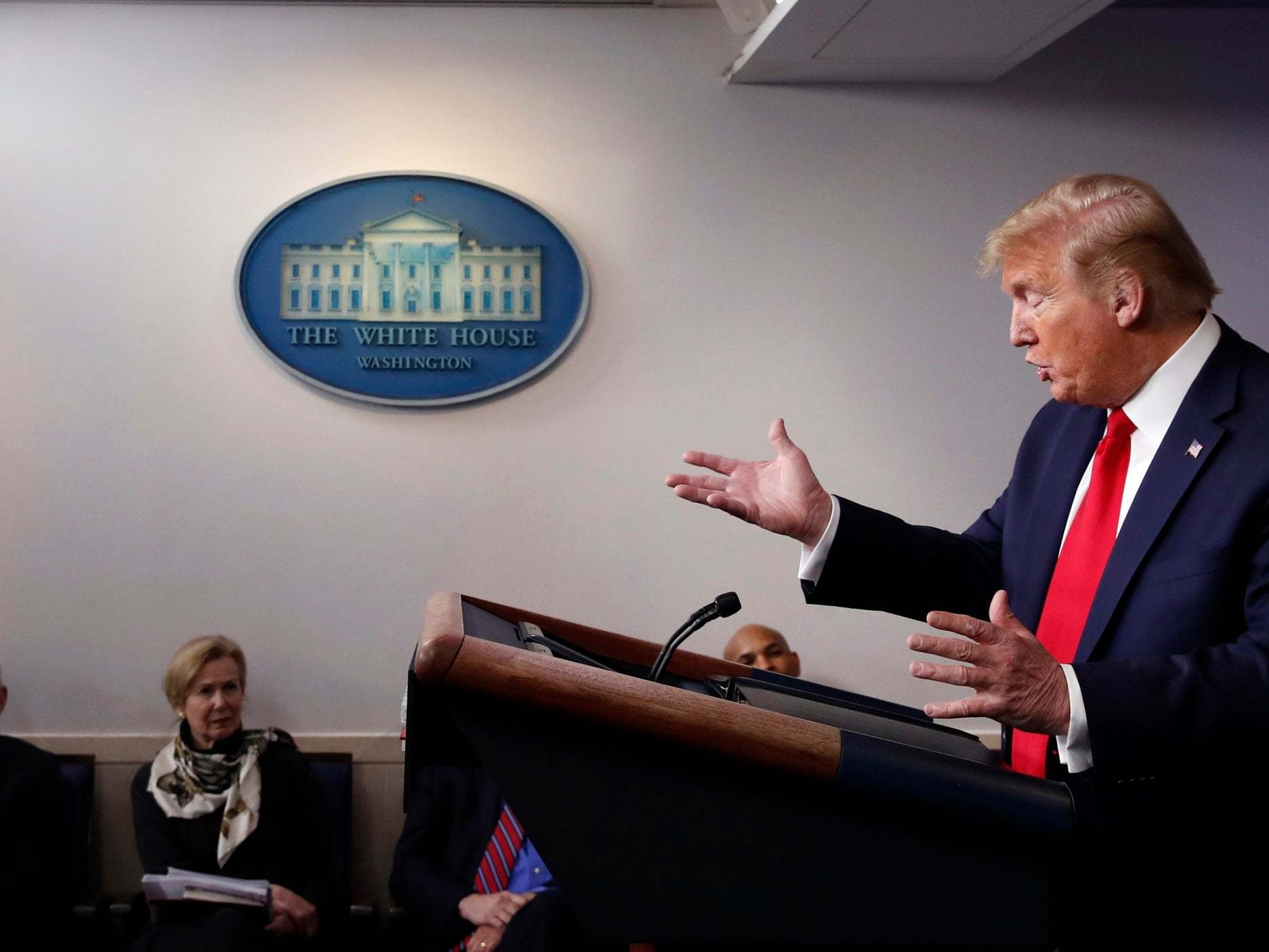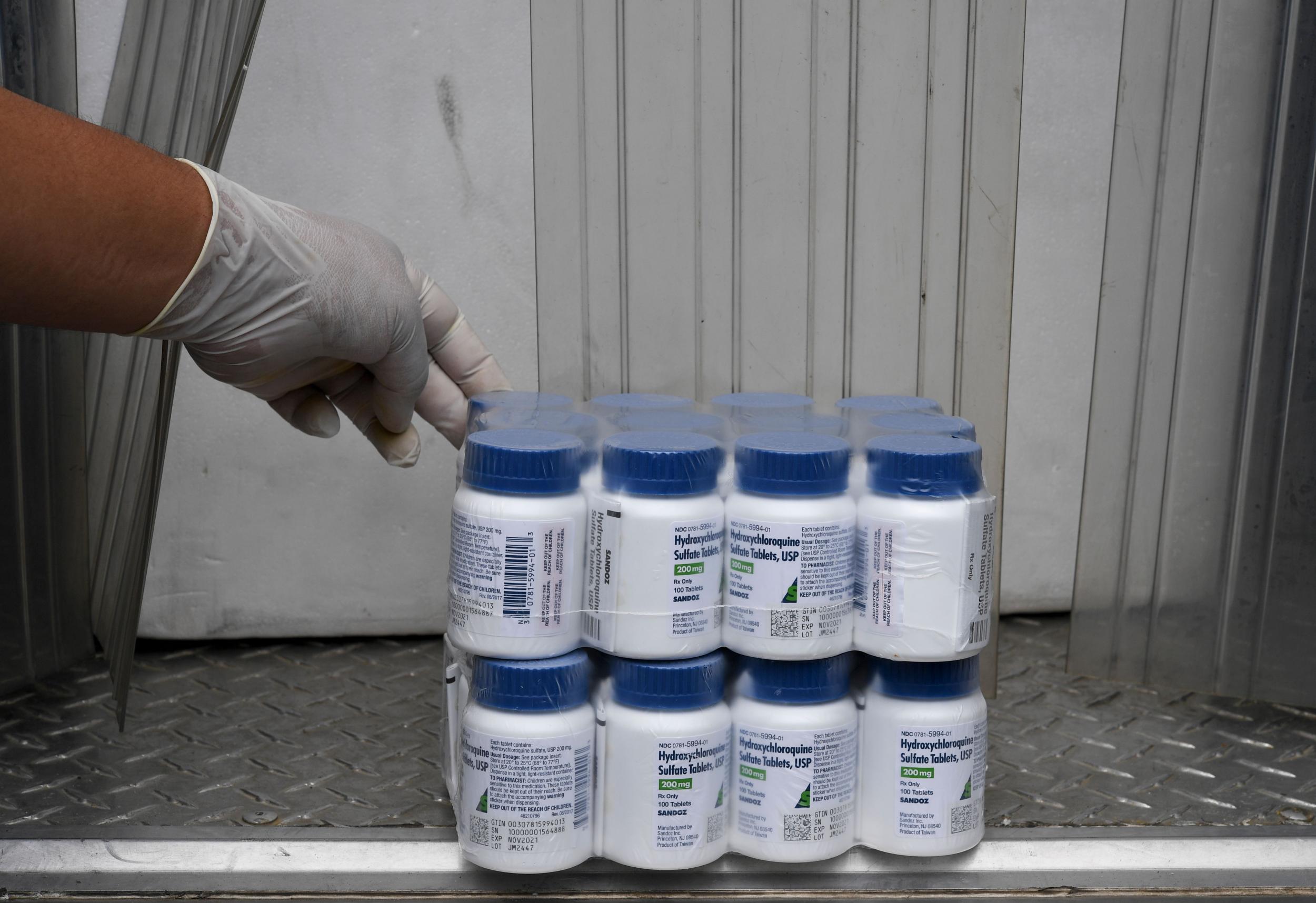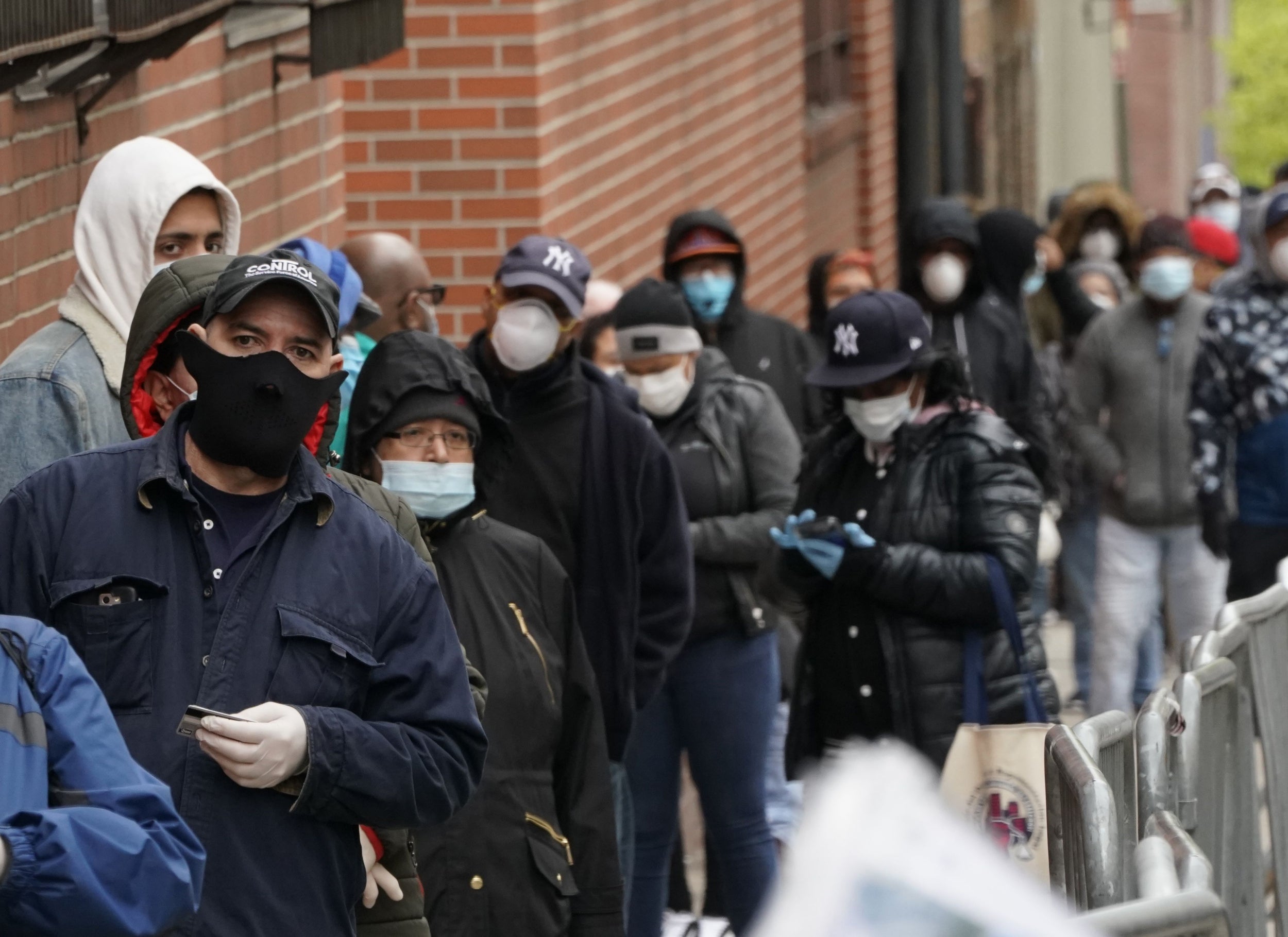Coronavirus: Malaria drug prescriptions surge after Trump praised chloroquine
While medical experts have since stepped up warnings about drugs’ possibly dangerous side effects, they were still being prescribed at more than six times normal rate during second week of April
Your support helps us to tell the story
From reproductive rights to climate change to Big Tech, The Independent is on the ground when the story is developing. Whether it's investigating the financials of Elon Musk's pro-Trump PAC or producing our latest documentary, 'The A Word', which shines a light on the American women fighting for reproductive rights, we know how important it is to parse out the facts from the messaging.
At such a critical moment in US history, we need reporters on the ground. Your donation allows us to keep sending journalists to speak to both sides of the story.
The Independent is trusted by Americans across the entire political spectrum. And unlike many other quality news outlets, we choose not to lock Americans out of our reporting and analysis with paywalls. We believe quality journalism should be available to everyone, paid for by those who can afford it.
Your support makes all the difference.It was at a midday briefing last month that President Donald Trump first used the White House telecast to promote two anti-malarial drugs in the fight against the coronavirus.
“I think it could be something really incredible,” Mr Trump said on 19 March, noting that while more study was needed, the two drugs had shown “very, very encouraging results” in treating the virus.
By that evening, first-time prescriptions of the drugs — chloroquine and hydroxychloroquine — poured into retail pharmacies at more than 46 times the rate of the average weekday, according to an analysis of prescription data. And the nearly 32,000 prescriptions came from across the spectrum — rheumatologists, cardiologists, dermatologists, psychiatrists and even podiatrists, the data shows.
While medical experts have since stepped up warnings about the drugs’ possibly dangerous side effects, they were still being prescribed at more than six times the normal rate during the second week of April, the analysis shows. All the while, Mr Trump continued to extol their use. “It’s having some very good results, I’ll tell you,” he said in a White House briefing on 13 April.
The extraordinary change in prescribing patterns reflects, at least in part, the outsize reach of the Trump megaphone, even when his pronouncements distort scientific evidence or run counter to the recommendations of experts in his own administration. It also offers the clearest evidence yet of the perils of a president willing to push unproven and potentially dangerous remedies to a public desperate for relief from the pandemic.
On Friday, the Food and Drug Administration warned against using the drugs outside a hospital setting or clinical trial because they could lead to serious heart rhythm problems in some coronavirus patients. Days earlier, the federal agency led by Dr Anthony Fauci — one of Mr Trump’s top advisers on the pandemic — issued cautionary advice on the drugs and stated that there was no proven medication to treat the virus.
As the prescriptions surged in the second half of March, the largest volumes per capita included states hit hardest by coronavirus, like New York and New Jersey. Georgia, Arkansas and Kentucky were other states with relatively high per capita figures. In absolute numbers, California and Washington, the earliest-hit states, were among the largest. The biggest number in either category was in Florida, where nearly one prescription was written for every 1,000 residents.
More than 40,000 health care professionals were first-time prescribers of the drugs in March, according to the data, which is anonymised and based on insurance claims filed for about 300 million patients in the United States, representing approximately 90 per cent of the country’s population. The data is current through to 14 April.

The data was compiled by IPM.ai, a subsidiary of Swoop, a company in Cambridge, Massachusetts, that specialises in health care data and analytics based on artificial intelligence. It does not include drugs prescribed to patients in hospitals, where some doctors have administered the medication or those released to hospitals from the Strategic National Stockpile. The data provided to The Times did not include the identities of the prescribers or the patients.
After Mr Trump’s remarks last month, retail pharmacies across the country reported a run on the drugs, which are mostly prescribed by a small subset of medical specialists. Within days, states began issuing emergency orders to restrict the new prescriptions.
Although the availability of hydroxychloroquine has improved in recent weeks, the FDA still lists it as being in short supply.
Mike Donnelly, vice president of communications for the Lupus Foundation of America, said that the organisation received calls and emails daily from patients who were told their prescription could be filled only in part or not at all. A spokesman for the Arthritis Foundation said some patients received their refills only after calling around to as many as a dozen pharmacies.

In the past month, about 40 states have intervened in some manner to quell the frenzy.
Idaho was the first to take a hard line, issuing a temporary rule on the same day that Trump first mentioned the drugs in his daily briefing. The rule banned pharmacists from dispensing chloroquine and hydroxychloroquine unless the prescription included a written diagnosis of a condition that the drugs had been proved to treat. The rule also limited prescriptions to a 14-day supply unless a patient had previously taken the medication.
The director of Idaho’s State Board of Pharmacy said at the time that many of the prescriptions were being written by doctors for themselves and their family members, a trend reported by other state boards as well.
Some of those writing prescriptions for themselves may have been on the front lines treating patients; the data shows an uptick among health care practitioners working in emergency medicine. More broadly, the analysis indicates a major shift in the kinds of medical practitioners writing the prescriptions, based on prescribing patterns in retail pharmacies since 2016.
Historically, the majority of chloroquine and hydroxychloroquine prescriptions have come out of a narrow band of specialities like rheumatology. That changed last month when the specialities reflected in the data included larger numbers of those working in dermatology, ophthalmology, podiatry, urology and other areas.

In the past six weeks, Dr Niran Al-Agba, a paediatrician in Silverdale, Washington, has prescribed chloroquine to a handful of adults she considered high risk for Covid-19 — among them, her 76-year-old mother, who works in her medical office.
Dr Al-Agba said she began researching the drugs in early March after the death of a Seattle-area man who at the time was the first known virus-related fatality in the United States. She concluded from her research that chloroquine might help, and she didn’t see any harm in writing a short prescription.
“It’s just really hard to look at your mother and not try,” she said.
Dr Al-Agba instructed her mother to take the pills only if she spiked a fever, which she has not. She still has the pills.
The interest in taking chloroquine and hydroxychloroquine as a possible treatment did not originate with Trump.
Reports from doctors in China and France that the drugs might help patients fuelled interest in scientific and medical communities in the United States. Conservative media, in particular, trumpeted the drugs’ potential effectiveness, and the data shows prescriptions had already increased 2 1/2 times over the weekday average during the week before Mr Trump’s March 19 briefing.
Mr Trump soon extended his interest to a combination of one of those drugs, hydroxychloroquine, with an antibiotic, azithromycin.
“HYDROXYCHLOROQUINE & AZITHROMYCIN, taken together, have a real chance to be one of the biggest game-changers in the history of medicine,” he wrote in a post to Twitter around 10am on 21 March, a Saturday.
The tweet coincided with a weekend flood of prescriptions for the two anti-malarial drugs. By the end of the day, the prescriptions had increased 114 times at retail pharmacies compared with the average weekend day, according to the Times analysis.
On Tuesday, the National Institute of Allergy and Infectious Diseases, led by Dr Fauci, issued guidelines against the combination of hydroxychloroquine and azithromycin except in clinical trials, with experts citing the potential for toxicities.
Enthusiasm for the drugs has been waning over the past couple of weeks, including at Mr Trump’s own news conferences and among researchers.
A small trial in Brazil of chloroquine was halted after coronavirus patients taking higher doses developed irregular heart rates that increased their risk of a potentially fatal heart arrhythmia. A study of 368 patients in US veterans hospitals found that hydroxychloroquine was associated with an increased death rate; the drug, used with or without the antibiotic azithromycin, also did not help patients avoid the need for ventilators (the veterans study was not a controlled trial, and neither study has been peer-reviewed).
Mr Trump was asked about the veterans study at his briefing Tuesday.
“Obviously, there have been some very good reports, and perhaps this one is not a good report,” he said.
By Thursday, Mr Trump had moved on to a different subject, raising a question at his White House briefing about the use of disinfectants to kill the coronavirus inside the body. The remarks were followed by dire warnings from state health officials who were inundated with requests for information about such a course of action. The president’s press secretary tried to make the case that the comments were taken out of context by the news media, and Mr Trump later insisted he had only been kidding.
The New York Times

Join our commenting forum
Join thought-provoking conversations, follow other Independent readers and see their replies
Comments